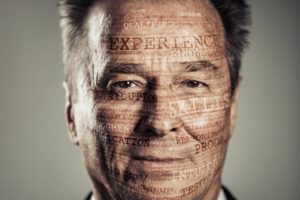#CareerAdvice : #CareerChange -How to Change Careers at 40 & Over. Great REad!
IN MANY SPORTS, halftime is when the coach changes up the strategy and can redefine success for the rest of the game. Positions are adjusted and players are swapped. The team that takes the field or court in the second half often has a completely different approach to the game in terms of pace, priorities and tactics.
The age of 40 is a similar waypoint for when people reconsider their career and whether they are in the right position or even the right sport. Following seven steps will guide a job seeker through the unique journey of making a major career change at 40 and older.
Understand Yourself
Philosophical wisdom usually starts with an exhortation to know oneself. After all, if you don’t know yourself, who does? What motivates you? What are you good at? In what areas are you less skilled? Starting with a clear measure of who you are and where you fit in the world of work is critical to any job search but especially if you seek a change of function, industry or profession.
The good thing about being 40 is that you likely have about two decades of work experience and have both received feedback and contemplated your own successes and failures. Think about when you have felt the most competent. Was it when you “nailed” an oral presentation? Or was it when you closed a difficult sale, fixed a technical problem or when you helped a colleague with a social issue? Unlike a recent graduate who needs to speculate regarding her strengths and weaknesses, the 40-year-old should know them cold.
Like appraising a piece of art from a different vantage, it is important to look at one’s career from varying perspectives. Why did one assignment go well and another less so? If you can explain your value retrospectively with confidence, you have a much better chance of articulating the value prospectively into a new role or field.
The 40-something job seeker needs to work his or her plan even while remaining open to changing the self-awareness, goals and execution plan along the way
Determine Your Goal
Having decided on who you are, you must determine what you seek. Life and careers are full of tradeoffs. Are you willing to move? How much of a step back are you willing to endure to make a change? What do you really want to do? What function, industry, level and location do you seek?
The goal needs to be specific, measurable and actionable. “I want a better job” is not a helpful goal. “I want to make a move into sales management at a service-oriented company with revenue of more than $25 million on the West Coast of the U.S.” is clearer and more definable. The goal may change in focus and clarity throughout your career change journey, but the struggle for definition is at least half the battle.
Like this Article ? Share It !You now can easily enjoy/follow/share Today our Award Winning Articles/Blogs with Now Over 2.5 Million Growing Participates Worldwidein our various Social Media formats below:
FSC LinkedIn Network: www.linkedin.com/in/fscnetwork
Facebook: http://www.facebook.com/pages/First-Sun-Consulting-LLC-Outplacement-Services/213542315355343?sk=wall
Twitter: Follow us @ firstsunllc
Question: Want the ‘the best/current articles/blogs on the web’ on Job Search, Resume, Advancing/Changing your Career, or simply Managing People?
Answer: Simply go to our FSC Career Blog below & type job search, resume, networking ) in Blog Search: https://www.firstsun.com/fsc-career-blog/
What Skill Sets do You have to be ‘Sharpened’ ?
Continue of article:
Articulate Your Why and Why You
If you know yourself and what you seek, how will you communicate to others in such a way that they can inform, help and direct you? A clear and concise elevator pitch is a key tool in learning how to present yourself and tell your story for opportunity. Tie the past to the future through the mechanism of your self-understanding and future goal.
“I have enjoyed good success as a salesperson and as a sales manager. When I think back on the first half of my career, I have noticed that my biggest impact was in the analytical support of my clients and teams. It turns out that I am very good at quantitative and qualitative analysis. It is the reason why I want to shift my career into a financial analyst role.”
Note the use of the personal narrative and career search goal as a bridge from the past to the future.
Assess Your Resources
Once your intellectual house is in order, you must turn to the practical aspects of executing your plan. Start with a candid assessment of your resources. These are your financial, social and intellectual capital. Financial resources include money and investments on hand, of course, but also an inventory of obligations. A single parent with limited means who is also supporting an elderly parent, for example, may not have the same risk tolerance as someone in different circumstances.
Social capital includes your contacts database but also your friends and family who can support or provide friction for your career change plan. Get the key people in your life on board with your plan by providing the same insight that you learned by articulating your “Why and Why You” statement.
Finally, take stock of your intellectual capital. Do you have the right degrees, certifications or licenses for the move? Not all fields require these designations, but you need a clear understanding of what might be required early in the process of making a career change.
Research and Network
Online and print research is a big part of executing a career change at any age but especially at 40 or older. Since you are selling wisdom and experience as a key part of your value offering, you must in fact be informed and knowledgeable. In addition to personal research, the best source of access to information, people and organizations is networking. Aggressive and focused networking is the most effective route to new opportunities. The good news is that these steps can be done before you leave your current position. Set a goal to meet two additional people each week for focused networking and be sure to offer assistance to others as you work toward your goal.
Take the Plunge – but Only After Reducing Your Risk
At a certain point, one must take the plunge. This does not mean hastily quitting a current job in order to dedicate oneself to a poorly conceived quixotic quest. It does mean breaking the cycle of procrastination that afflicts most people (when they are honest with themselves). A written plan with deadlines and goals will provide accountability and ensure that real progress is being made.
Rapidly Iterate and Repeat
Few startup companies stick with the same business model with which they launched. And so it is with a career switch job search. The six steps above are a process that may be repeated multiple times throughout a career. What you want and how you conceive your goal will likely change and adapt to real-world conditions and learning. For example, a social worker interested in getting into corporate sales might be surprised to learn that there are selling opportunities in the nonprofit world that may not require as radical an industry change as previously thought to gain access.
The 40-something job seeker needs to work his or her plan even while remaining open to changing the self-awareness, goals and execution plan along the way.
Career change is challenging at any age, but the 40-or-older job seeker has the advantage of greater resources, wisdom and insight than her younger colleague. Midlife career change is possible and likely when the candidate follows these seven steps and comes back after halftime ready to win.
Author: Peter A. Gudmundsson, Contributor
Peter A. Gudmundsson has written for U.S. News and World Report since 2015. He is the CEO of Th… READ MORE
USNews.com | July 26, 2019


